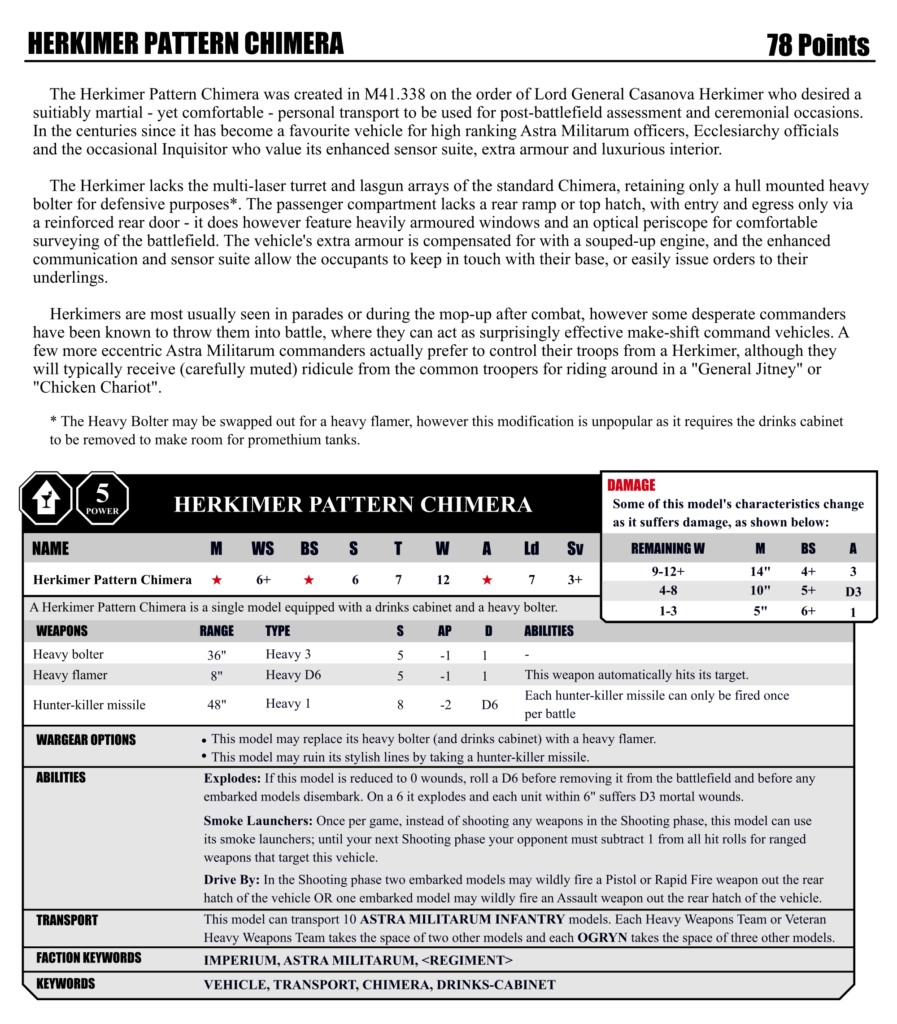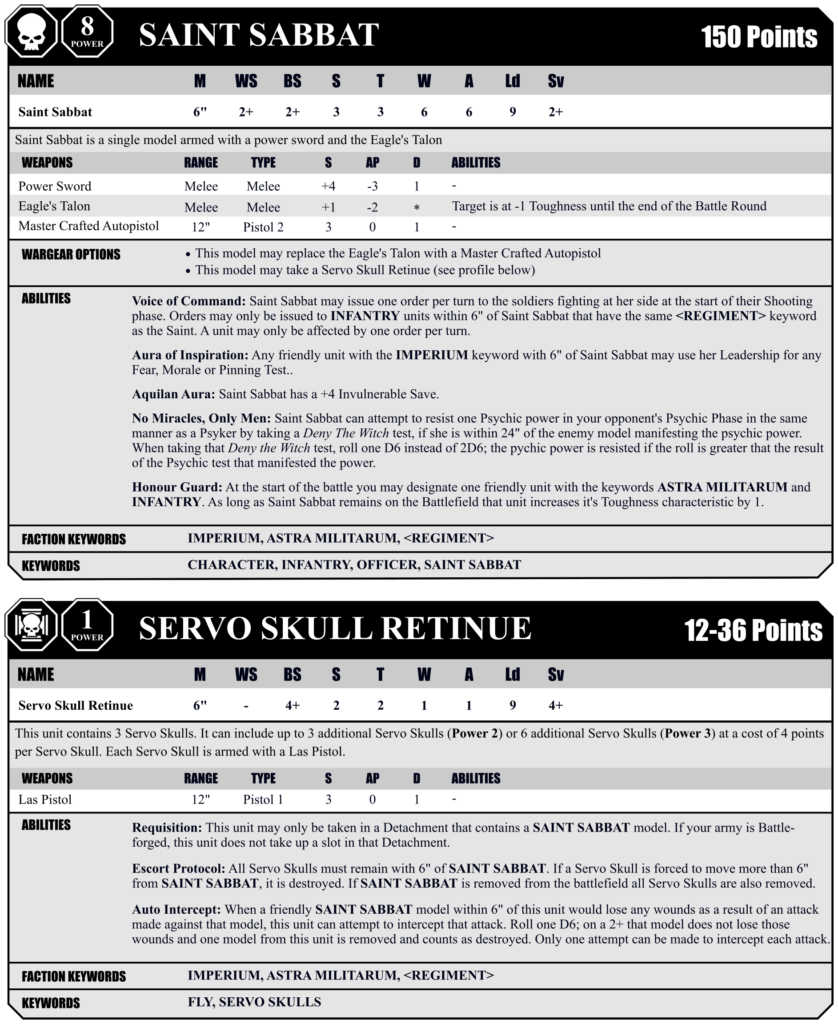And while I’m posting homebrew Warhammer 40,000 content, there’s this…
The Herkimer Pattern Chimera was created in M41.338 on the order of Lord General Casanova Herkimer who desired a suitably martial – yet comfortable – personal transport to be used for post-battlefield assessment and ceremonial occasions. In the centuries since it has become a favourite vehicle for high ranking Astra Militarum officers, Ecclesiarchy officials and the occasional Inquisitor who value its enhanced sensor suite, extra armour and luxurious interior.
The Herkimer lacks the multi-laser turret and lasgun arrays of the standard Chimera, retaining only a hull mounted heavy bolter for defensive purposes*. The passenger compartment lacks a rear ramp or top hatch, with entry and egress only via a reinforced rear door – it does however feature heavily armoured windows and an optical periscope for comfortable surveying of the battlefield. The vehicle’s extra armour is compensated for with a souped-up engine, and the enhanced communication and sensor suite allow the occupants to keep in touch with their base, or easily issue orders to their underlings.
Herkimers are most usually seen in parades or during the mop-up after combat, however some desperate commanders have been known to throw them into battle, where they can act as surprisingly effective makeshift command vehicles. A few more eccentric Astra Militarum commanders actually prefer to control their troops from a Herkimer, although they will typically receive (carefully muted) ridicule from the common troopers for riding around in a “General Jitney” or “Chicken Chariot”.
* The Heavy Bolter may be swapped out for a heavy flamer, however this modification is unpopular as it requires the drinks cabinet to be removed to make room for promethium tanks.



